Discover the intriguing world of generalist species in our detailed guide. Learn through vivid examples and fascinating facts about these adaptable creatures, offering a comprehensive insight into their diverse habitats and behaviors
Some species have been classified as Generalist to pin out their natural habitats and food resources that they survive on. Generalist species can survive on a wide range of foods and different variety habitats. These species are usually Omnivores and their diet consists of wide varieties because they are not picky eaters.
Examples of Generalist Species Examples
- Racoons (Procyon lotor)
- Bobcats (Lynx rufus)
- Coyote (Canis latrans)
- Dingo (Canis lupus dingo)
- Common Blue (Polyommatus icarus)
- Cabbage white butterfly (Pieris rapae)
- The Bath White (Pontia daplidice)
- Adonis blue (Lysandra bellargus)
- Southern brown argus (Aricia cramera)
- Cockroach (Blattodea)
- Humans (Homo sapiens)
- Elephants (Elephantidae)
- American crows (Corvis brachyrhynchos)
- White tailed deer (Odocoileus virginianus)
- Opossums (Didelphidae)
- Black rat (Rattus rattus)
- Blue jay (Cyanocitta cristata)
- Northern Cardinals (Cardinalidae)
- Common Grackle (Quiscalus quiscalus)
- Great spotted woodpecker (Dendrocopos major)
- Black-capped Chickadee (Poecile atricapillus)
- Vesper sparrow (Pooecetes gramineus)
- Oreochromis niloticus (Nile tilapia)
- Ocean sunfish (Mola mola)
- Sea Urchins (Paracentrotus lividus)
- Blueline surgeonfish (Acanthurus nigroris)
Racoons (Procyon lotor):
They live in varied environments namely; large cities, mountains, forests throughout North America. They feed on Fruits, nuts, insects, human trash, eggs and frogs.
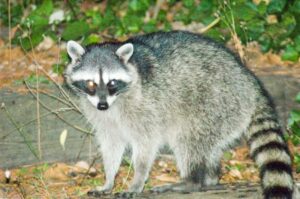
Bobcats (Lynx rufus):
It is generally found in North America. They are adaptable species found in deciduous, coniferous. They are carnivorous and feed on animals like rabbits, mice, squirrels, moles, reptiles and birds. They hunt from dusk to dawn and are territorial.
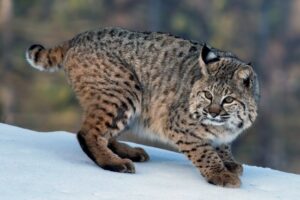
Coyote (Canis latrans):
They are also called Prairie wolf or Brush wolf found in Alaska, throughout the United States and Canada. They are territorial and mark their territory with urine and feces. They feed on Amphibians, fish, insects, reptiles, birds, rodents, mammals like deer, elk, sheep and moose. They also eat fruits and vegetables like, peaches, blackberries, apples, pears, carrots, watermelon, peanuts, grasses, grains and grasses.
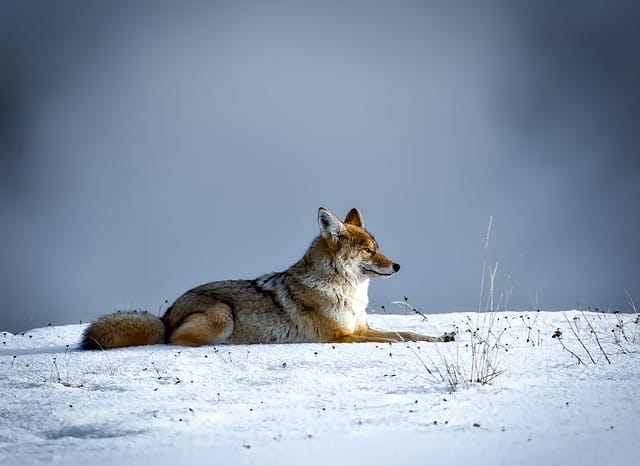
Dingo (Canis lupus dingo):
They are also called Warrigal found mostly in Australia, Southeast Asia, Philippines and Indonesia. Dingoes are carnivores and feed on Kangaroos, wallabies, rabbits, small rodents, sheep and poultry.
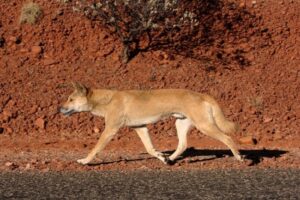
Common Blue (Polyommatus icarus):
They are also called Common blue butterfly or European common blue found throughout the Palearctic, Europe, North Africa and Canada. They feed on Leguminosae plant family.
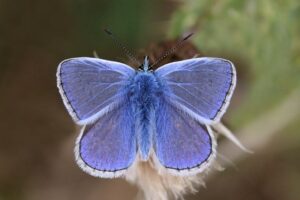
Cabbage white butterfly (Pieris rapae):
They are found in Europe, China, North America, Australia and New Zealand. They feed on plants like, Brassicaceae, Capparidaceae and Resedaceae.
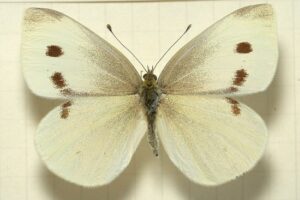
The Bath White (Pontia daplidice):
This is the family of small white and yellow butterflies. They are mostly found in Palearctic regions including; Sothern Europe and England. They feed on Brassicaceae plant family.
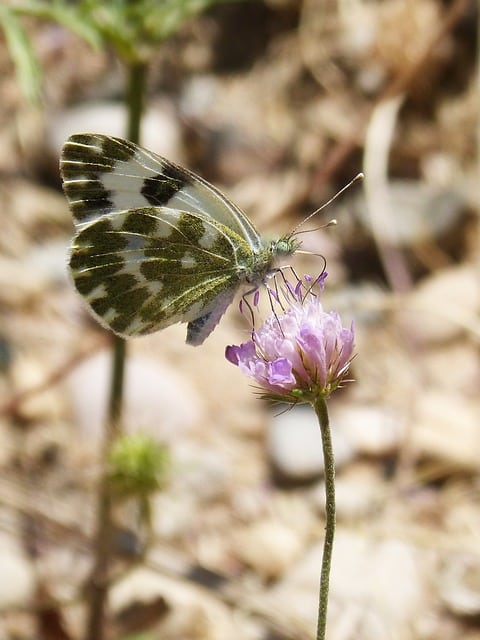
Adonis blue (Lysandra bellargus):
They are also known as Polyommatus bellargus and belongs to the butterfly family Lycaenidae. They are found in Western, central and south Europe, South Russia, Iraq, Iran, Caucasus, and Turkey. Their food plant is Horseshoe vetch.
Southern brown argus (Aricia cramera):
It is also called Aricia cramera butterfly that belongs to the family Lycaenidae. They are found in Southern Europe, North Africa, Morocco, Tunisia, Spain and Portugal. They feed on Erodium, Helianthemum and Geranium plant species.
Cockroach (Blattodea):
Cockroaches comes in generalist species because of their ability to survive under various climatic conditions. They are found abundantly throughput the world. They can withstand extreme low temperatures which enable them to thrive in Arctic regions.
Humans (Homo sapiens):
They are the classic examples of generalist species. Humans have broad habitat range and are capable of feeding on various food resources.
Elephants (Elephantidae):
Savannah elephants are giant herbivores and feed on variety of food resources such as; Grass, sugarcane, nuts, Banana depending on their ability. They are found in habitats ranging from grasslands to forests including tropical evergreen forest, semi- evergreen forest, moist-deciduous forest, dry deciduous forest, dry-thorn forest, cultivated and secondary forests.
American crows (Corvis brachyrhynchos):
Crows are the common birds that can find food and shelter in variety of different environments. They are found in cities and in wilderness, forest, deserts, mountains. Crows are omnivores and feed on small rodents, eggs, carrion, seeds, berries and garbage.
White tailed deer (Odocoileus virginianus):
They are also known as Virginia deer found in North America. They are very common and widespread as they can be easily adapted to the wide range of habitats. They are found in regions including; temperate forests, wooded lowlands, open prairies, mountains, savannahs, tropical forests and wetlands. They feed on legumes, shoots, leaves, cacti, grasses, fruits, corns, carrots and mushrooms.
Opossums (Didelphidae):
Opossums are generalist species that live in wide range of habitats and can feed on variety of foods. They are mostly found in Shrubs islands, woods, farmlands, parks, suburbs and in urban areas. They feed on dead animals, insects, rodents, eggs, frogs, fruits, grain, plants, dog food, cat food and animal food waste.
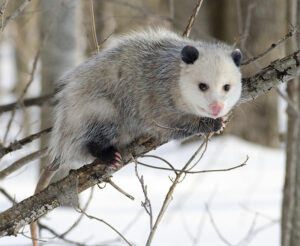
Black rat (Rattus rattus):
They are the best-known example of generalist species just like humans. They have the ability survive in a wide range of environments. They are also called house rat, roof rat or ship rat. They were originated in India and now found worldwide. They are omnivores and feed on foods like, seeds, leaves, fungi, fruits, cereals, sugarcane, coconuts, coffee beans, and oranges.
Blue jay (Cyanocitta cristata):
They are passerine bird found in North America, Canada. They eat seeds, nuts, soft fruits and arthropods. They are distributed throughout Canada, Florida, Texas, foot hills of Rocky Mountains, Labrador, Nova Scotia, Quebec and Manitoba. They feed on corn, grains, seeds, peanuts, berries, bread, meat, acorns, weed seeds and some vegetables.
They are categorized further into four sub species:
- Northern Blue jay (Cyanocitta cristata bromia)
- Coastal blue jay (Cyanocitta cristata cristata)
- Interior blue jay (Cyanocitta cristata cyanotephra)
- Florida blue jay (Cyanocitta cristata semplei)
Northern Cardinals (Cardinalidae):
They are found in Canada, Northern Argentina, Uruguay, Central America, Hawaii and Bermuda. They mostly feed on fruits, seeds, insects, nectar and sap.
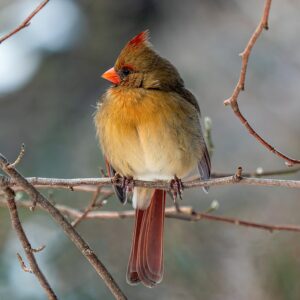
Common Grackle (Quiscalus quiscalus):
They are found largely in North America. They are further sub-categorized into three species: The Florida grackle, the purple grackle. The bronzed grackle. They are omnivores and feed on frogs, eggs, berries, insects, minnows, seeds, grains, small birds and mice.
Great Spotted Woodpecker (Dendrocopos major):
They are found throughout Eurasia, Japan, North Africa, Tunisia, Ireland, Aleutian Islands, Pribilof Islands and Alaska. They are omnivores and feed on beetles, spiders, Lepidoptera larvae, nuts, conifer seeds and fruits.
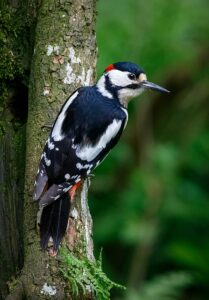
Black-capped Chickadee (Poecile atricapillus):
It is a songbird that lives in deciduous and mixed forests in US and Canada. They feed on Insects, seeds and berries. They have been classified as least concern by IUCN due too their large population.
Vesper sparrow (Pooecetes gramineus):
They are found across Canada and Northern United states, including Pennsylvania, Ohio, Indiana, Missouri, Arizona, New Mexico, Colorado. Their diet depends on the season, in winter they eat insects, seeds and plants like threeawn (Aristada), stinkgrass (Eragrostis), carpetweed (Mollugo), Clover (Trifolium), knotweeds (Polygonum) and neckweed (Veronica).
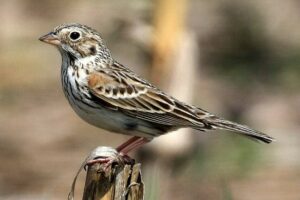
Oreochromis niloticus (Nile tilapia):
It is the most important food fishes and is called African freshwater chichlid. It is found in wide range of adaptations from trophic to ecological. It is found in the south-western Middle east, the Niger, Benue, Volta and Senegal rivers, Lake Chad, Tanganyika, Albert, Edward, and Kivu.
Ocean sunfish (Mola mola):
It is the heaviest known bony fish in the world. They mostly consume small fishes, fish larvae, squid, sea jellies, eggs, eelgrass and salps. They are found in Atlantic and Pacific Oceans.
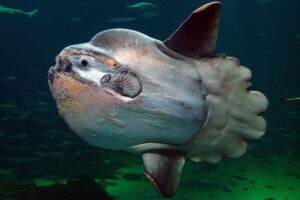
Sea Urchins (Paracentrotus lividus):
They are generalist species and are opportunistic omnivores. They are found widely distributed in North west pacific regions. Their diet varies geographically and with size. They feed on algae, plankton, kelp, periwinkles, barnacles and mussels.
Blueline surgeonfish (Acanthurus nigroris):
They are generally found in lagoons, seaweed reefs, mixed corals, rubble and sand throughout the central and western Pacific Ocean. They largely feed on filamentous algae.
Pros and cons of Generalists species:
Pros
They can adapt to a different environment very easily if somehow their habitat is destroyed and can feed on variety of foods if one type of food supply runs out.
They ae capable of competing with other organisms and are not easily endangered.
Cons
Generalists species usually have lots of competition with other species for a niche and could overpopulate easily.
Also Read:
- Cellular respiration
- Do plant cells have centrioles
- Are bacteria photosynthetic
- Do animal cells have centrioles
- Creeper plant example
- Channel protein function
- Is fungi prokaryotic or eukaryotic
- Does nucleus have double membrane
- Globular protein functions
- Gamete
Hey! I am Sneha Sah, I have completed post graduation in Biotechnology. Science has always been fascinating to me and writing is my passion. As an academic writer my aim is to make Science easy and simple to learn and read.